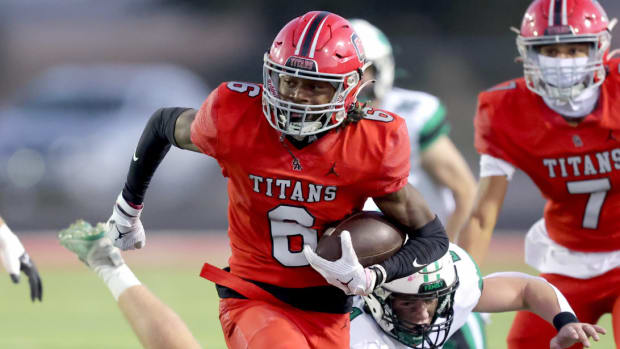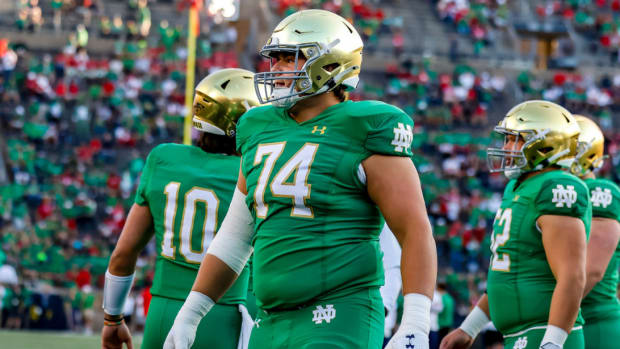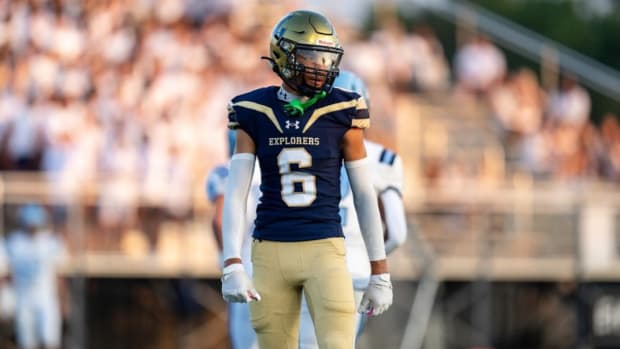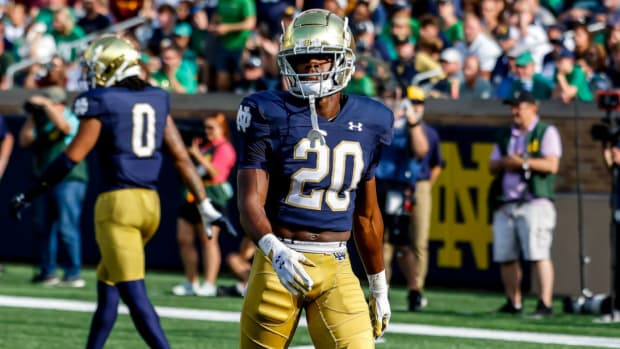Troy Pride Jr. Will Be Difficult To Replace
Let me begin by discussing what this article is not.
This article is not an attempt to downplay the brilliant career that Julian Love had at Notre Dame. Love was an outstanding player during his three seasons in South Bend.
It's not an attempt to say that Troy Pride Jr. was better than Love.
What this article is meant to do is express how good Pride has been, how difficult he will be to replace and how the opinion that seems to be held by many Irish fans is wildly off-base.
To be honest, one of the issues with Pride and the opinion some have of him is the fact how Notre Dame used him is hard to evaluate when watching a game on television.
So let's dive into why Pride was such an outstanding player and why he will be so difficult to replace, and why he's so under-appreciated. Let's look at the career numbers between Love and Pride.
The snaps refer to the number of coverage snaps each played (according to Pro Football Focus). YPT refers to the yards allowed per target and YPC refers to the yards allowed per completion. BU refers to break ups.
As you can see, the number of career coverage snaps is almost identical, although Pride (50 games) played more games than Love (38).
Pride was targeted fewer times and allowed fewer completions. My initial thought when I put these stats together was Love spent more time in the boundary, but the more I dove into the numbers I realized that wasn't the case. Love spent one full season and half of another, but he began the 2017 season as the field cornerback.
Love was targeted 79 times in his full season as the boundary corner while Pride was targeted just 59 times in his full season as a boundary corner. Simply put, opponents went after Love when he as in the boundary with greater frequency than they attacked Pride.
Love allowed a lower yards per completion rate (50.7 to 56.6) and a slightly better yards per target average (5.9 to 6.0), but Pride allowed fewer yards per completion (10.7 to 11.5). Pride also allowed fewer total yards despite playing 11 more games (1,055 to 1,189).
Love gave up four more touchdowns (11) than Pride (7) and had just one more career interception.
When I discuss Pride's career with others the notion of "back shoulder" throws gets brought up, which is an incredibly infuriating response. That's an emotional response to his play, not a factual one, and it provides no real analysis.
The fact is Pride and Love allowed the exact same number of completions per game in their final two seasons (3.0). Pride averaged 31.8 yards per game, which less than what Love allowed (32.2).
When you consider how Pride was used it makes those numbers even more impressive. Where Love dominates Pride was pass break ups, with Love setting the Notre Dame record with 39 break ups while Pride had just 18 break ups.
A big part of that is how the two were used. Love was used mostly to play off coverage throughout his career, which allowed him to keep throws in front of him, which also allowed him to use his tremendous instincts to drive on and break up throws.
Love was rarely used to play tight coverage, and his man coverage skills is one reason why he slipped in the draft. But that doesn't and shouldn't take away from how excellent he was, and it speaks to the impressive coaching job done by Mike Elko and Clark Lea, who did what good coaches are supposed to do, they built around Love's strengths, just like they did with Pride.
Pride was used more to play tighter coverage and more man coverage, which meant he played more with his back to the quarterback than Love, to a much greater degree. That means Pride was challenged down the field to a much greater degree.
Pride was especially good in the final 19 games of his career. He struggled early in the 2018 season, giving up 33 completions on 49 targets for 354 yards in the first six games of the 2018 season. Those are poor numbers. He missed the Pittsburgh game, and after that contest his career took a completely different turn.
Over the next 19 games Pride's play was outstanding.
In his final 19 games, Pride gave up just 43 completions, held opponents to a 50.0-percent completion rate, allowed an average of just 23.2 yards per game. He held opponents to 5.1 yards per attempt, 10.2 yards per completion and five touchdowns, which is one every four games.
That is outstanding production for Pride, and when you study his film or watch him play in person you get it. You see a player that shows excellent coverage skills, good route instincts and elite speed. Pride wasn't perfect, and he did not play the ball well down the field.
But there's a reason why his numbers were so good despite this weakness in his game. That reason is that Pride rarely allowed receivers to even be open enough for quarterbacks to challenge him. Consider that opponents challenged Pride 5.4 times in his two full seasons as a starter, while opponents challenged Love 6.2 times per game.
One area where Love had a significant advantage was as a tackler in the run game, something that has never been a strength of Pride's game.
Pride is climbing up draft boards and it's not just for his strong performance at the Senior Bowl. It is also about more and more analysts diving deeper into his film and realizing that despite the one negative in his game (playing the ball), his ability to cover is outstanding.
Notre Dame has a talented young group of corners, but replacing Pride might be the biggest challenge on the defense. It will certainly be a challenge for new cornerbacks coach Mike Mickens.
I leave you with a graph that compares Pride's career numbers to the top nine cornerbacks in the 2020 Draft according to The Athletic's Dane Brugler.







